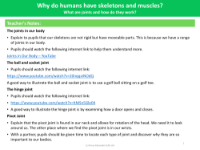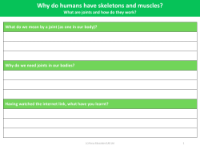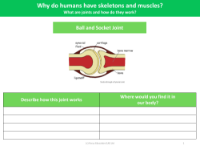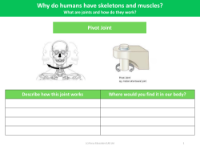What are joints and how do they work? - Presentation
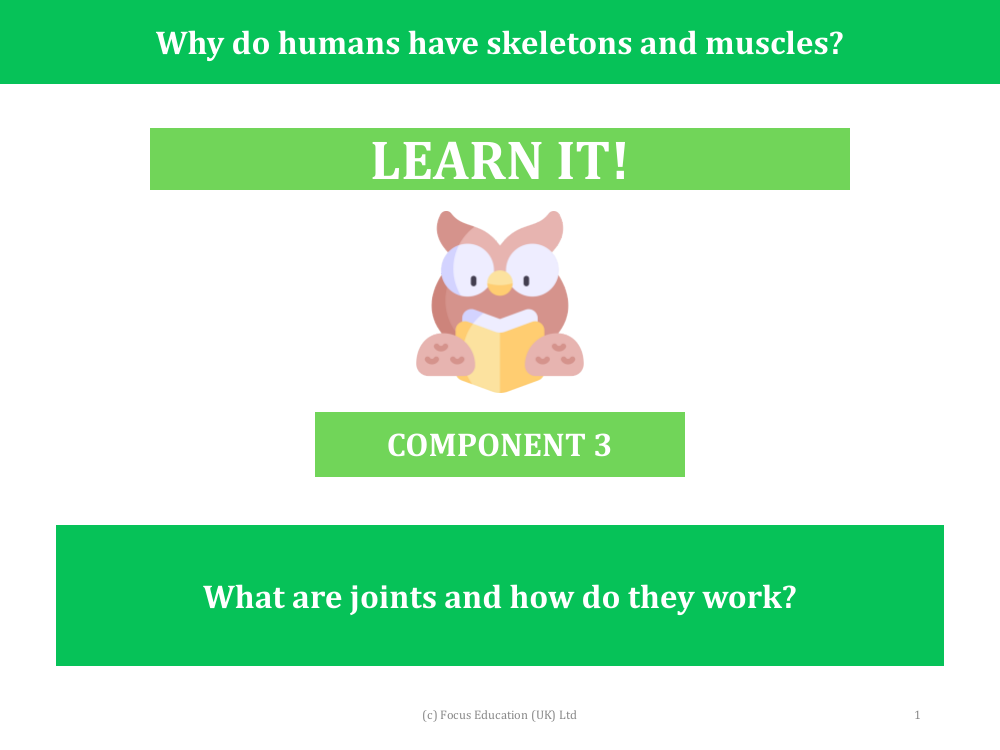
Science Resource Description
Joints are the moveable connections between bones that allow our skeletons to be flexible rather than rigid. They are crucial for movement and support, enabling us to perform a wide range of actions. There are various types of joints in the human body, each with a specific function and structure. For instance, the ball and socket joint, like a golf ball on a tee, allows for a wide range of movement in many directions. This type of joint can be found in the shoulders and hips, facilitating movements such as swinging a tennis racket or walking.
Another type of joint is the hinge joint, which operates similarly to how a door moves on its hinges, allowing movement in one plane. This joint can be observed in our knees and elbows, enabling us to perform actions like bending our arm to lift a glass or squatting. The pivot joint, found in our neck and wrists, allows for rotation, such as turning the head to look around or rotating the wrists to open a jar. Understanding these joints and their functions helps us appreciate how our bodies are designed for complex and varied movements, and why having a skeletal and muscular system is essential for our daily activities.


